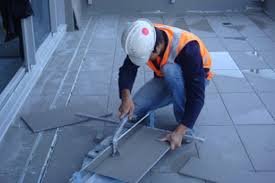Floor and Wall Tiling Works: A Comprehensive Guide to Installation, Design, and Maintenance
Floor and wall tiling play a critical role in both the aesthetic appeal and functionality of any space. Whether it’s in residential homes, commercial buildings, or industrial settings, tiles are a versatile and durable option that adds a sense of elegance, cleanliness, and style to interiors and exteriors alike. The process of tiling involves not only selecting the right tiles for the application but also ensuring proper installation and ongoing maintenance. This guide explores the key aspects of floor and wall tiling works, including types of tiles, installation techniques, design considerations, and maintenance tips.
1. Types of Tiles Used for Floors and Walls:
Choosing the right tile material is the first step in any successful tiling project. The material, size, color, texture, and finish of tiles will vary depending on the intended use, location, and personal or architectural preferences. Each type of tile has its unique characteristics, making it suitable for specific applications.
1.1 Ceramic Tiles:
Ceramic tiles are one of the most common types used in tiling works due to their affordability, versatility, and ease of maintenance. They are made from natural clay, which is then baked in a kiln. Ceramic tiles can be glazed or unglazed, with glazed options providing a shiny, water-resistant surface suitable for areas like kitchens and bathrooms. They come in a wide range of colors and patterns, making them ideal for both floors and walls.




Floor and wall fitting
Floor and wall fitting are essential steps in interior design and construction, involving the installation of surfaces to enhance both functionality and aesthetics. Floor fitting includes laying materials like hardwood, laminate, vinyl, tiles, or carpet, each chosen based on durability, maintenance, and room use. Proper subfloor preparation is crucial to ensure a smooth, long-lasting finish, while insulation and underlay can improve soundproofing and comfort.
Wall fitting, often focused on materials like drywall, tiles, wood paneling, or wallpaper, aims to provide a clean, sturdy surface and can include features like insulation or moisture resistance, particularly in bathrooms and kitchens. Precision in both floor and wall fitting is vital, as gaps, uneven surfaces, or poor alignment can affect structural integrity and appearance, requiring professional installation to achieve the best results.
The benefits of professional floor and wall fitting extend to both aesthetics and functionality, making it a valuable investment for any space. Key advantages include:
Enhanced Durability: Professionally fitted floors and walls are more resilient, reducing the likelihood of damage over time from wear, moisture, or temperature changes.
Improved Insulation: Quality fitting with the right materials can enhance soundproofing and thermal insulation, which increases comfort and reduces energy costs.
Increased Property Value: Well-fitted, attractive flooring and walls add to a property’s appeal and value, making it more attractive to potential buyers or tenants.

